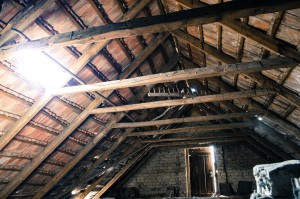 The Ontario Court of Appeal released a landmark decision in Ontario condominium law in December 2014: Orr v. Metropolitan Toronto Condominium Corporation No. 1056.
The Ontario Court of Appeal released a landmark decision in Ontario condominium law in December 2014: Orr v. Metropolitan Toronto Condominium Corporation No. 1056.
The facts of that case were essentially as follows. A unit owner in a condominium townhouse complex, without the knowledge of the Board or management, installed an unauthorized addition to the unit in the attic area. A third floor was in effect created. The problem was that the attic formed part of the common elements, not the unit.
The plaintiff in this case, Ms. Rainville (formerly Orr), purchased the unit from the owner who had performed the attic addition, assuming that the third floor attic was included within the unit. After the owner and condominium subsequently discovered the unauthorized additions, litigation was commenced by the plaintiff against various parties, including the condominium corporation, her lawyers who acted for her on the purchase and the condominium’s management company.
At trial, the plaintiff was successful in part against the condominium in terms of obtaining some measure of damages, however the plaintiff was ordered to close up the third floor and return it to attic space. The trial judge found that the plaintiff’s lawyers were responsible for damages as well for not having reviewed the entirety of the condominium’s legal plans with the plaintiff, which would have disclosed that the third floor was not part of the unit.
The Court of Appeal ultimately overturned many of the trial judge’s determinations, and made various important findings. One significant finding was that the plaintiff is not required to close up the third floor at her expense. The Court of Appeal in effect suggested that the condominium consider taking steps to ‘legalize’ the third floor.
The Court of Appeal also confirmed the liability of the plaintiff’s lawyers for damages relating to the failure to fully advise the plaintiff. This is significant, and confirms that a lawyer acting on a condominium purchase should be reviewing the entirety of the condominium plans with his/her client to confirm that the client is aware of the extent of the unit being purchased.
More importantly from a condominium governance perspective was the Court of Appeal’s finding that the condominium made a negligent misstatement in the Status Certificate. The relevant provision was a statement which provided: “There are no continuing violations of the declaration, …” Note that this statement was not a required part of the Status Certificate and was voluntarily added by the condominium.
The main lesson in my view from this case is that a condominium corporation should be extremely careful in making any such statement. In fact, I would suggest that such a blanket volunteered statement should not be provided, period.
A lesson of broader scope would be that condominiums should be careful with any superfluous statements in a status certificate. Additional statements are quite common in Status Certificates in my experience, but a condominium should review all additional statements in the Status Certificate with the condominium’s lawyer, especially in light of this decision.
I can understand the desire in many cases to add statements to the Status Certificate, especially because the current form can be difficult to understand and many seemingly relevant issues are not addressed at all. The anticipated changes to the Condominium Act may address the Status Certificate form, and I would point out that the Condominium Act Review: Stage 2 Solutions Report has a specific recommendation as follows: “The certificate should include a range of new information, such as a warning that the unit has not been inspected for alterations (unless otherwise stated), insurance coverage on outstanding litigation and the corporation’s policy on pets.” (emphasis added)
I would address one final aspect of this case which should not be neglected in such a discussion: the legal costs. Note that the plaintiff’s lawyers were ordered to pay almost $900,000 in costs in the trial judge’s decision. The Court of Appeal has not yet ruled on the costs issues. The trial lasted 43 hearing days over three months, and the legal costs of the various parties combined appears to be in the millions of dollars. It is quite unfortunate that a dispute of this nature evolved into such a complex and costly matter. The Court of Appeal noted with respect to costs that “This is a case in which the perils of disproportionality are on full display.” The Court of Appeal has not yet made a decision concerning costs of the appeal.